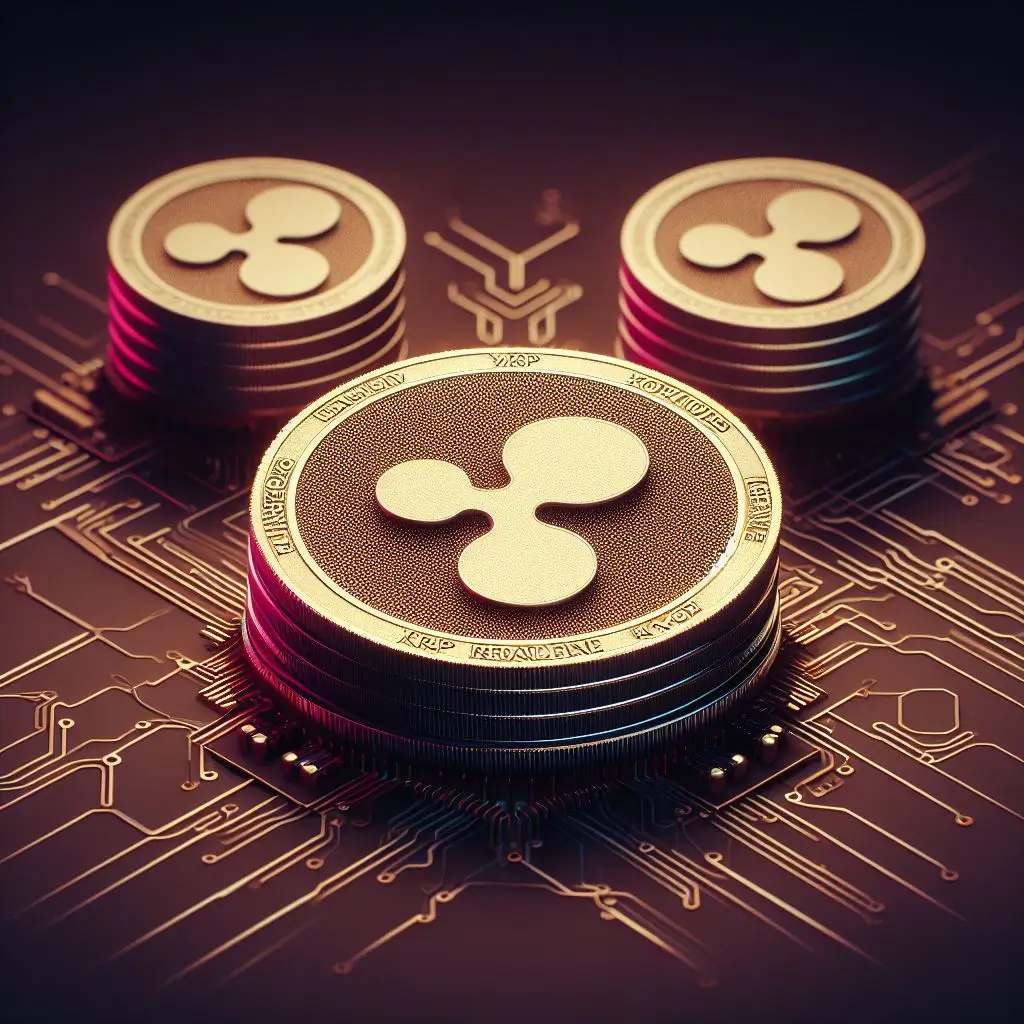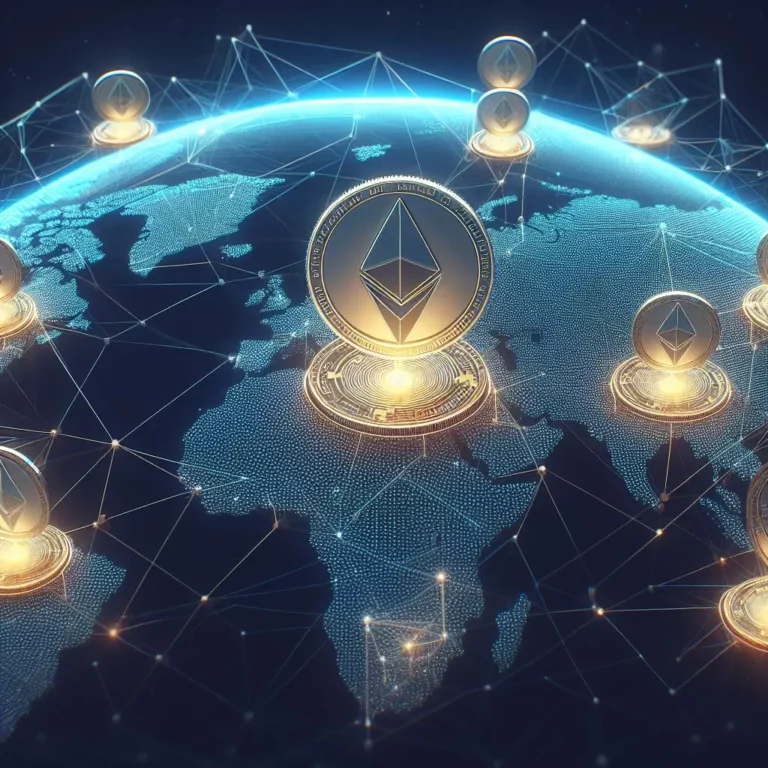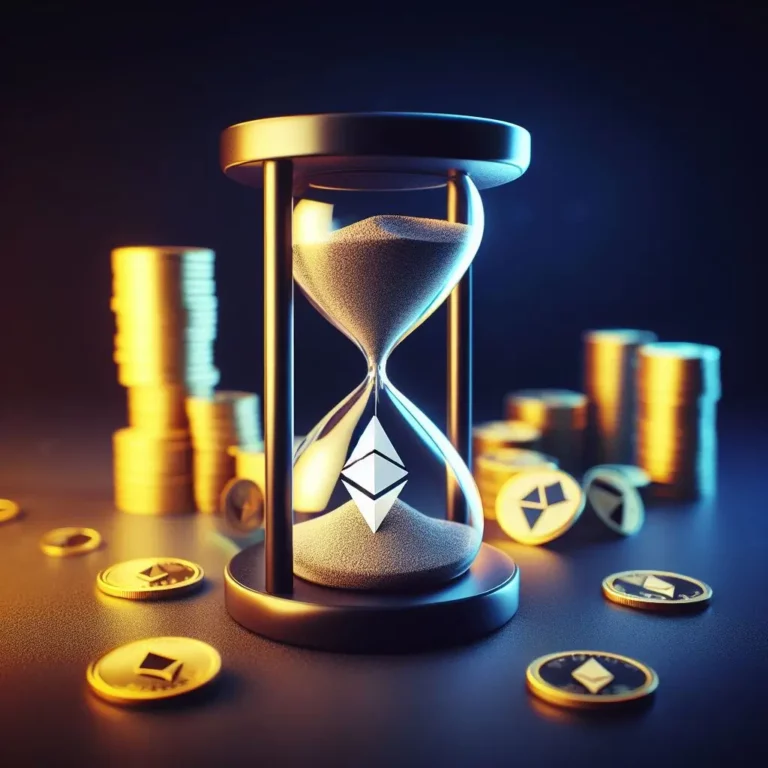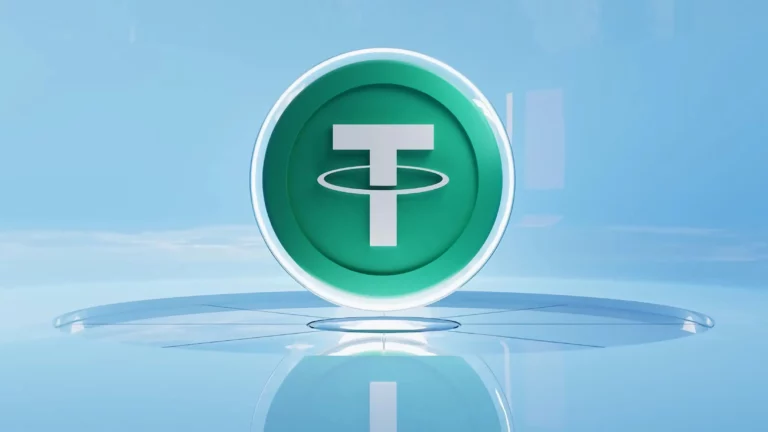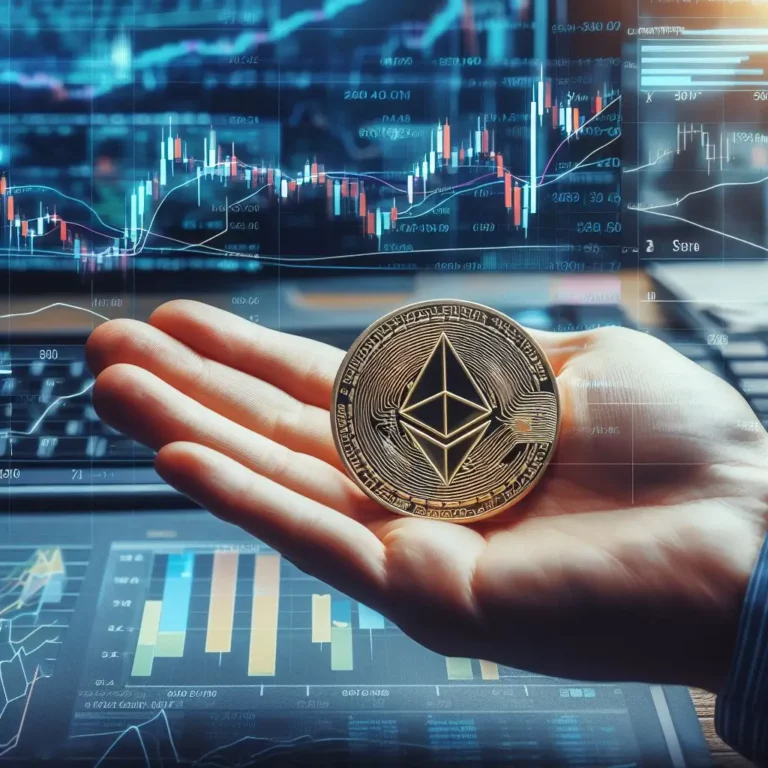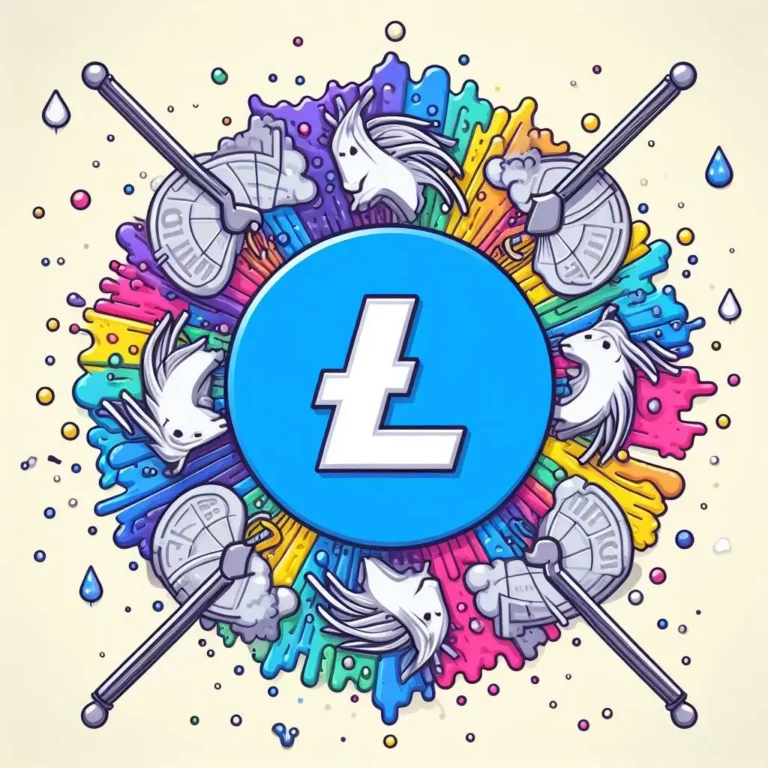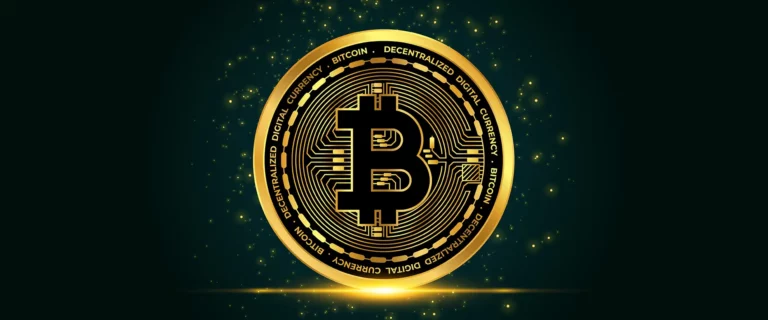XRP, short for Ripple, is a digital currency. It’s not like the coins or notes you have in your wallet; it’s all on the internet. This digital money has a special job: it helps people send their money across borders quickly, at a low cost, and without the need for trust. It’s like a super-fast and inexpensive way to send money to someone far away.
XRP is more than just a digital coin; it’s like a bridge between different types of money. When banks or other financial institutions need to trade different currencies, like digital money and regular money (fiat), XRP helps them do it. It’s like a mediator, making sure the exchange happens smoothly.
This digital currency, XRP, didn’t appear out of nowhere. It was created by a tech company called Ripple Labs back in 2011. Think of it as a piece of technology made by smart folks named Jed McCaleb and Chris Larsen. They wanted to revolutionize the way we send money across borders.
So, in simple terms, XRP is like the digital money of the future, designed to make international money transfers fast and affordable, and it’s the brainchild of Ripple Labs, a tech company with a mission to change how we handle our finances.
History and Background of XRP
Now, let’s dive into the backstory of XRP, its journey through time:
XRP didn’t just appear overnight; it has a history. It’s like a book with many chapters. Over the years, it evolved from an idea into a full-fledged digital currency.
Ripple Labs, the company behind XRP, had a vision. They wanted to change the way we send money globally. So, they brought XRP into existence back in 2011. It’s like the birth of a new technology.
As the years passed, XRP went through changes, adaptations, and improvements. Think of it like a car that gets regular upgrades to become faster and more efficient. Ripple Labs worked hard to refine and expand XRP’s capabilities.
XRP’s journey includes becoming a vital part of Ripple’s mission to create a new way of handling cross-border transactions. It’s like a piece of the puzzle that fits perfectly into Ripple’s plan to transform the world of finance.
So, in simple words, XRP has a history that starts with a vision by Ripple Labs in 2011. It’s like a technology that grew and evolved, all with the goal of making global money transfers more accessible and efficient.
XRP vs. Other Cryptocurrencies
Now, let’s compare XRP to other digital currencies. It’s like seeing how different cars on the road have their unique features and functions:
XRP is not the only digital currency out there; it shares the digital highway with other cryptocurrencies like Bitcoin and Ethereum. Each of them has something special to offer.
For example, Bitcoin is like digital gold. It’s a store of value, much like how people keep gold as an investment. On the other hand, Ethereum is like a platform where you can build other digital things, not just money.
But XRP has its unique role. It’s like the fast and efficient courier of the cryptocurrency world. Its primary job is to help people send money across borders quickly and at a low cost. It’s like the speedster on the digital highway.
XRP stands out because of its focus on being a bridge between different types of money. It’s like the multilingual translator in a global conversation, ensuring everyone can understand each other’s money.
So, in straightforward terms, XRP isn’t the only digital currency, but it’s special because of its role in making international money transfers fast and cost-effective, unlike Bitcoin and Ethereum, which have different purposes. Each cryptocurrency has its own lane on the digital highway.
How XRP Works
Now, let’s get into the nitty-gritty of how XRP does its job. It’s like looking under the hood of a car to see what makes it go:
XRP’s magic lies in the technology behind it. It’s like the engine that powers a car. XRP is not just a random digital token; it’s part of a whole network created by Ripple Labs.
This network is designed to make cross-border transactions faster and cheaper. It’s like a superhighway for money. And XRP plays a crucial role in making it all work.
But here’s the clever part: XRP isn’t required for every transaction in this network. It’s like having a tool in your toolbox that you use when you need it. Ripple’s network can do its job even without using XRP for every single transaction.
How does it keep everything in check? With a consensus protocol. It’s like having a referee in a game, ensuring that everything is fair and secure. This protocol checks balances and transactions to make sure no one’s cheating.
In simple words, XRP is like the fuel that powers Ripple’s network, but it’s not needed for every transaction. The network uses a consensus protocol to keep everything running smoothly and securely, like a fair game.
Use Cases and Adoption of XRP
Let’s explore how XRP is put to use and where it’s gaining popularity. It’s like seeing all the different jobs a tool can do:
XRP doesn’t just sit idle; it has real-world applications. It’s like a versatile tool in the financial world.
One of its main jobs is helping with cross-border payments. Imagine you want to send money from one country to another. XRP can make that happen quickly and without costing you a fortune. It’s like having a superhero for international money transfers.
XRP is also getting noticed by big players in the financial world. Banks and other financial institutions are starting to see its potential. They use XRP to settle transactions across borders. It’s like financial experts recognizing the value of this digital currency.
But XRP isn’t just limited to banks. It’s spreading its wings into other areas, too. People are starting to use it for more than just sending money. You can use XRP to pay for things like travel, entertainment, online services, and even financial services. It’s like having one currency that works in many places.
In simple terms, XRP isn’t just a one-trick pony. It’s like a Swiss Army knife in the world of digital currencies. Its primary job is making cross-border payments fast and affordable, but it’s finding new roles in various sectors. It’s like having a tool that keeps surprising you with its capabilities.
XRP’s Performance and Market Trends
Now, let’s take a look at how XRP is doing in the world of digital currencies. It’s like checking the score of your favorite team in a game:
XRP has been on quite a journey in the world of digital currencies. Its performance, just like a stock or a sports team, can be measured in various ways.
One key indicator is its price. It’s like looking at how much a famous painting is worth. The price of XRP can go up and down, and people keep an eye on it to see how it’s doing in the market.
Market capitalization is another important factor. It’s like the total value of all the gold in a treasure chest. For XRP, this value has been significant. It ranks among the top cryptocurrencies globally, which is quite an achievement.
Trading volume is like the activity in a busy marketplace. It tells us how much XRP is being bought and sold. A higher trading volume can indicate a lot of interest in this digital currency.
In simple words, XRP’s performance in the world of cryptocurrencies is like a rollercoaster ride. Its price can go up and down, but it has a substantial market capitalization, making it one of the top cryptocurrencies out there. Its trading volume shows that many people are interested in XRP, like a bustling marketplace.
How to Buy and Use XRP
Now, let’s explore how you can get your hands on XRP and what you can do with it. It’s like learning how to buy a ticket for a fun event and enjoying all the activities:
To buy XRP, you need to head to a digital marketplace called a cryptocurrency exchange. It’s like going to a store to buy something. There are different types of exchanges, just like various stores have different products.
These exchanges offer different ways to get XRP. You can think of it as choosing between cash, credit card, or other payment methods when you’re shopping. You can use traditional money to buy XRP or exchange other cryptocurrencies for it.
Once you have some XRP in your digital wallet, you can use it for various purposes. It’s like having a versatile tool in your toolbox. You can hold XRP as an investment, much like you save money in a bank. Or you can use it to exchange for other digital currencies.
Another exciting thing you can do is use XRP on the Ripple network. It’s like having a membership card to access a specific club. XRP can be used to facilitate transactions on this network, making it a handy tool for sending money across borders.
In simple terms, buying XRP is like shopping at a digital store (a cryptocurrency exchange), and you can use different payment methods. Once you have XRP, you can hold it as an investment or exchange it for other digital currencies. You can also use it as a special pass to participate in the Ripple network and make cross-border transactions a breeze.
Conclusion
In conclusion, XRP is more than just a digital currency; it’s a game-changer in the world of cross-border transactions and digital finance. Created by Ripple Labs in 2011, XRP was designed with a clear purpose: to make international money transfers fast, affordable, and efficient.
As we explored its journey, we discovered that XRP is not just another cryptocurrency; it’s a bridge between different forms of money. Its role as a bridge currency and settlement layer has gained recognition among financial institutions, banks, and beyond.
Despite some controversies and regulatory challenges, XRP has maintained its position as one of the leading cryptocurrencies by market capitalization. It has shown resilience and adaptability in a rapidly evolving financial landscape.
XRP’s technology and use cases extend beyond simple digital transactions. It has found its way into various sectors, from cross-border payments to online services, making it a versatile tool in the digital economy.
